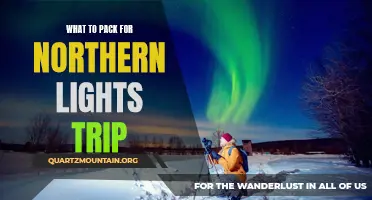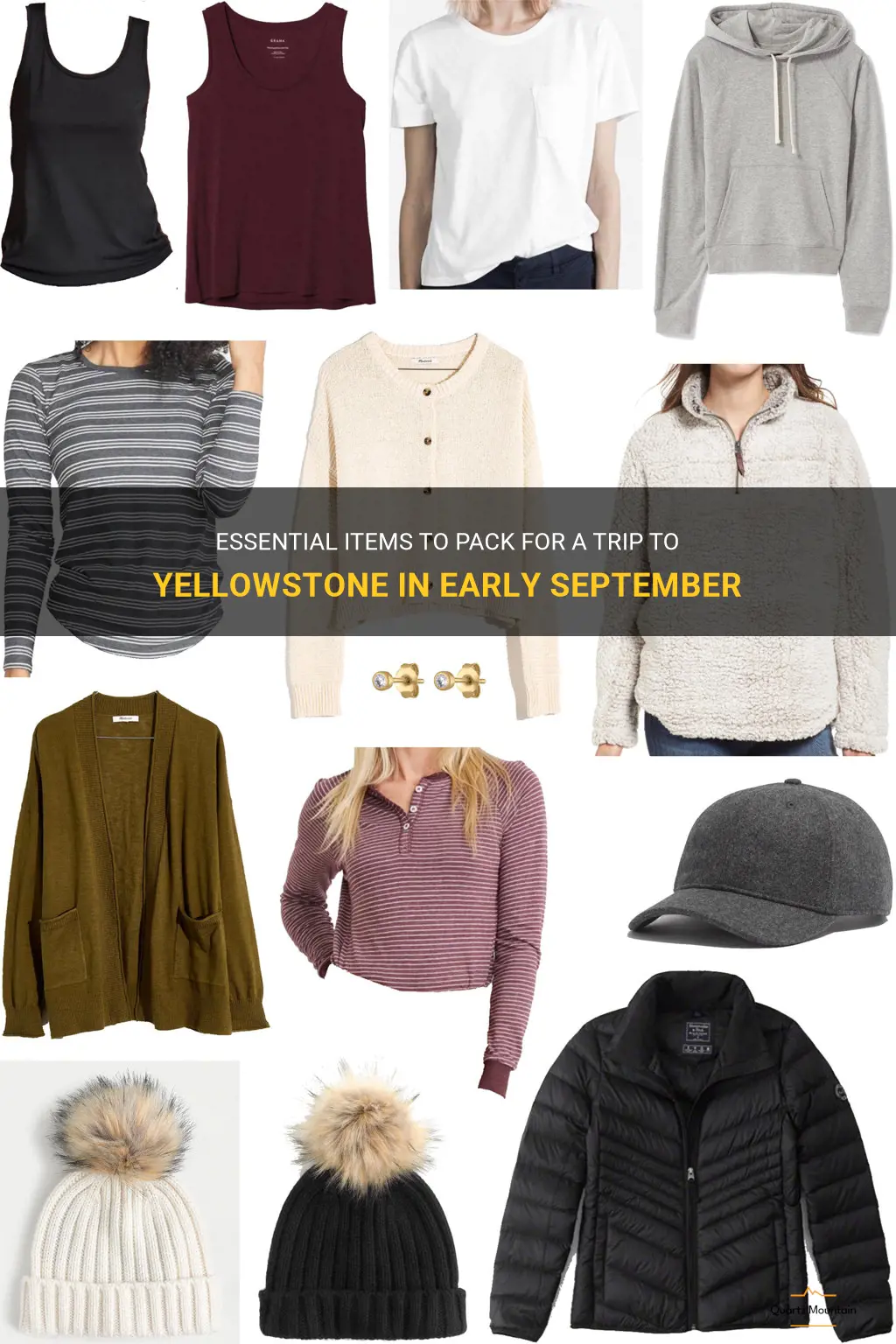
Planning a trip to Yellowstone in early September? Don't forget to pack your sense of wonder and adventure! As summer fades into fall, America's first national park unveils a breathtaking display of colors and wildlife, making it a perfect time to visit. To ensure you have the best trip possible, it's essential to pack the right items that will keep you comfortable and prepared for whatever nature throws your way. From warm layers to bear spray, we've compiled a list of essential items to help make your trip unforgettable. So get ready to explore the stunning landscapes and geothermal wonders that await you in Yellowstone this September!
| Characteristics | Values |
|---|---|
| Weather | Mild |
| Temperature | 35-70°F |
| Clothing | Layered clothing, waterproof jacket, hat, gloves |
| Footwear | Comfortable hiking boots/shoes |
| Accessories | Sunglasses, sunscreen, insect repellent |
| Gear | Daypack, water bottle, binoculars, camera |
| Camping | Tent, sleeping bag, camping stove, cooking utensils |
| Wildlife | Bear spray, bear-resistant food containers |
| Activities | Hiking, wildlife watching, fishing, photography |
| Other | Cash, maps, first aid kit |
What You'll Learn
- What are the essential items to pack for a trip to Yellowstone in early September?
- Are there any specific clothing items or gear that are recommended for the weather in Yellowstone during this time of year?
- Will I need to pack any special equipment or supplies for outdoor activities such as hiking or camping in Yellowstone in early September?
- Are there any specific items or accessories that will be useful for wildlife viewing or photography in Yellowstone during this time of year?
- Are there any restrictions or regulations on what can be packed or brought into Yellowstone National Park in early September?

What are the essential items to pack for a trip to Yellowstone in early September?
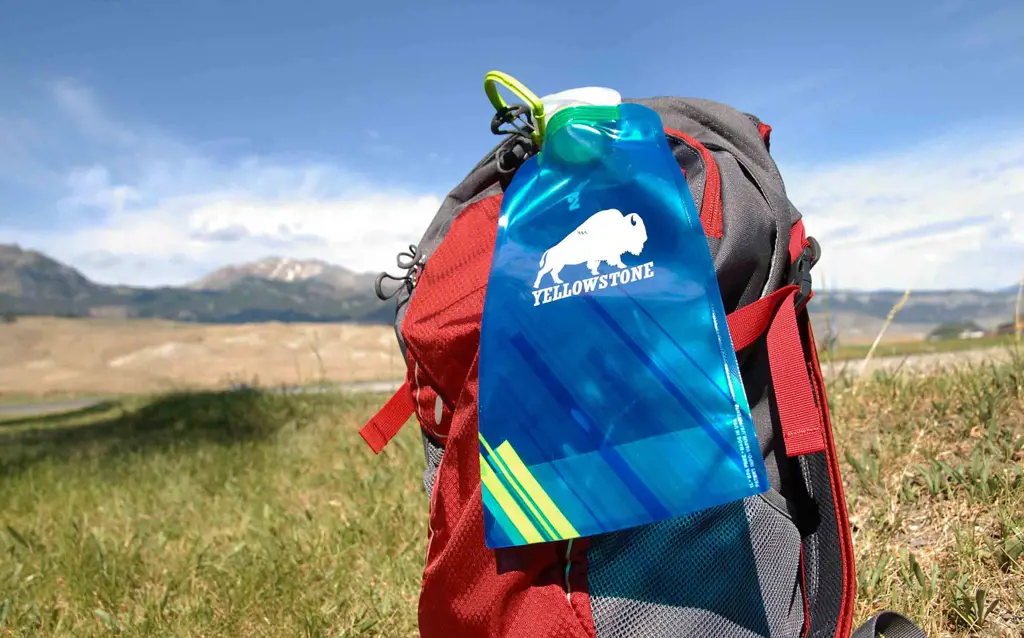
When planning a trip to Yellowstone National Park in early September, it's important to be prepared for a variety of weather conditions and outdoor activities. Here are some essential items to pack for a successful and enjoyable trip:
- Clothing: Layering is key when visiting Yellowstone in early September. Mornings and evenings can be cool, while afternoons can get hot. Pack a mix of lightweight and warm clothing options, including long-sleeve shirts, fleece jackets, and a waterproof outer layer. Don't forget to bring comfortable and sturdy hiking boots for exploring the park's trails.
- Insect repellent: Mosquitoes and other biting insects can still be active in early September, especially near bodies of water. Be sure to pack insect repellent to protect yourself from bites and potential diseases.
- Binoculars and camera: Yellowstone is known for its incredible wildlife and stunning landscapes. To fully appreciate the park's natural beauty, bring a pair of binoculars to spot birds and animals at a distance. Don't forget to also pack a camera to capture memorable moments and scenic vistas.
- Sun protection: Even though September marks the transition from summer to fall, the sun's rays can still be intense. Bring a wide-brimmed hat, sunglasses, and sunscreen to protect your skin from the sun's harmful UV rays.
- Water bottle and snacks: Staying hydrated is crucial when exploring Yellowstone's trails and attractions. Bring a reusable water bottle to fill up at various water stations throughout the park. It's also a good idea to pack some snacks, such as energy bars or trail mix, to keep you fueled during your adventures.
- Maps and guidebooks: Yellowstone is a vast national park with many points of interest and trails to explore. To make the most of your visit, bring along maps and guidebooks that provide information on the park's features, hiking routes, and wildlife viewing areas.
- First aid kit: Accidents and injuries can happen, especially when hiking or participating in outdoor activities. Be prepared by packing a small first aid kit that includes band-aids, antiseptic ointment, pain relievers, and any necessary prescription medications.
- Bear spray: Yellowstone is home to grizzly bears and black bears, so it's important to be bear aware. Purchase bear spray, which is a type of pepper spray specifically formulated to deter bears, and learn how to use it properly. Keep it easily accessible while exploring the park's backcountry.
- Camping gear (if applicable): If you plan on camping during your visit, make sure to pack all necessary camping gear, including a tent, sleeping bag, and cooking utensils. Check the park's regulations and guidelines regarding camping and be prepared for potentially chilly nights in early September.
Remember to check the weather forecast for your specific dates of travel and consult with park rangers for any additional recommendations or restrictions. By packing these essential items, you'll be well-prepared for a fantastic adventure in Yellowstone National Park.
Pack Your Picnic Basket with These Must-Have Items
You may want to see also

Are there any specific clothing items or gear that are recommended for the weather in Yellowstone during this time of year?

Yellowstone National Park is known for its unpredictable weather, even during the summer months. It is important to be prepared for a wide range of conditions when visiting the park. Here are some recommended clothing items and gear to ensure your comfort and safety during your trip to Yellowstone.
- Layering is key: Since the weather in Yellowstone can change rapidly, it is important to dress in layers. Start with a base layer made of moisture-wicking material to keep your skin dry. This could be a lightweight, long-sleeved shirt and pants. Add a mid-layer, such as a fleece jacket or vest, for extra insulation. Finally, top it off with a waterproof and windproof outer layer, such as a rain jacket or shell. The ability to add or remove layers will help you stay comfortable throughout the day.
- Waterproof and sturdy footwear: Yellowstone is home to many geothermal features, such as hot springs and geysers, which can result in wet and muddy conditions. It is essential to have waterproof footwear, such as hiking boots or shoes, to keep your feet dry and comfortable. Additionally, opt for shoes with good traction to navigate the park's rugged terrain.
- Hat and sunscreen: The sun at high altitudes can be intense, even on cloudy days. Wearing a wide-brimmed hat will protect your face, neck, and ears from the sun's rays. Don't forget to apply sunscreen to any exposed skin to prevent sunburn.
- Gloves and a warm hat: Even during the summer months, nighttime temperatures in Yellowstone can drop significantly. Packing a pair of gloves and a warm hat will help keep you warm when the temperature cools down.
- Insect repellent: Yellowstone is known for its abundant wildlife, including mosquitoes and other biting insects. To fend off these pesky critters, bring along an insect repellent containing DEET or another effective ingredient. This will allow you to enjoy the park without constant irritation and discomfort.
- Daypack: A comfortable and durable daypack is essential for carrying your essentials while exploring Yellowstone. Ensure that your pack has enough room for water, snacks, extra layers, a camera, and binoculars. It is also recommended to bring a small first aid kit, a map of the park, and a wildlife guide.
- Binoculars and camera: Yellowstone is famous for its wildlife and breathtaking landscapes. Bringing binoculars will allow you to spot animals from a safe distance and truly appreciate the park's beauty. A camera with a good zoom lens will help capture those memorable moments.
- Water bottle and snacks: Staying hydrated is crucial, especially at high altitudes. Carry a refillable water bottle and drink regularly throughout the day. Pack lightweight snacks, such as energy bars or trail mix, to keep your energy levels up during long hikes or wildlife sightings.
Remember, it is always better to be overprepared than underprepared when exploring Yellowstone National Park. By considering the unpredictable weather and unique environment, and packing the recommended clothing items and gear, you can have a safe and enjoyable visit to this incredible destination.
Essential Packing Guide for Men Traveling to Maui
You may want to see also

Will I need to pack any special equipment or supplies for outdoor activities such as hiking or camping in Yellowstone in early September?
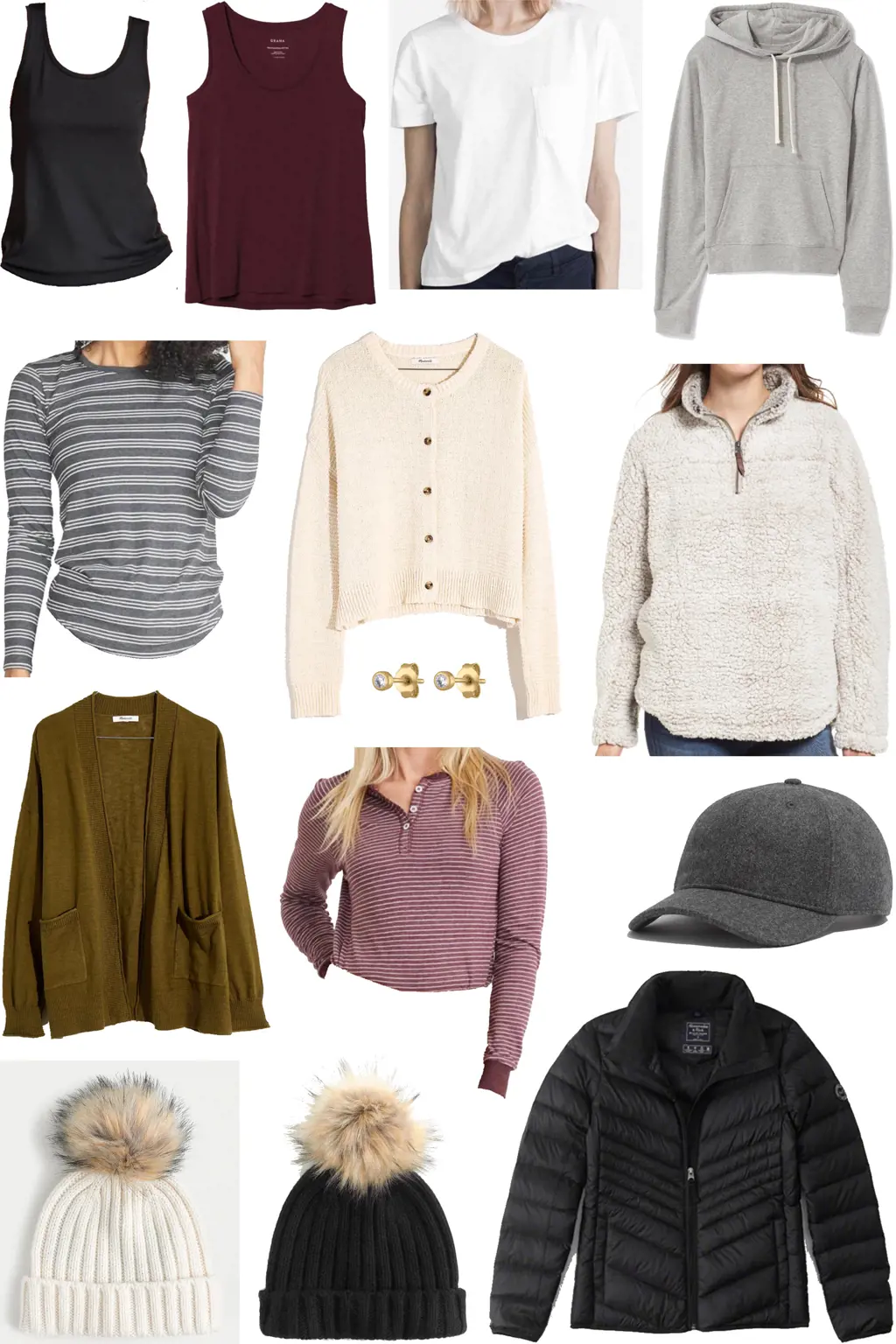
When planning for outdoor activities in Yellowstone National Park in early September, it's important to pack the right gear and supplies to ensure a safe and enjoyable experience. Here are some essential items to consider bringing with you:
- Hiking Gear: Yellowstone offers a vast network of hiking trails, so it's important to have the right gear for a comfortable and safe hike. Pack sturdy and comfortable hiking boots, along with appropriate socks to prevent blisters. Carry a backpack with essentials such as a map, compass, whistle, and a first aid kit. It's also advisable to bring a hiking pole for stability on uneven terrains.
- Clothing: Early September in Yellowstone can bring unpredictable weather, so it's important to dress in layers. Bring moisture-wicking and quick-drying clothing as a base layer to regulate body temperature. Pack a lightweight, waterproof jacket in case of rain or sudden temperature drops. Don't forget to bring a hat, sunglasses, and sunscreen to protect yourself from the sun during sunny days.
- Camping Supplies: If you're planning on camping in Yellowstone, make sure to bring a sturdy tent, sleeping bag, and sleeping pad. The nights can get chilly, so choose a sleeping bag rated for colder temperatures. It's also a good idea to bring a portable camping stove and cookware if you plan on preparing your meals. Check Yellowstone's website for specific regulations on campfires and bear-proof food storage.
- Food and Water: Bring enough food and snacks to sustain yourself during your outdoor activities. Opt for lightweight and non-perishable food options that provide sufficient energy. There are water sources available throughout the park, but it's recommended to carry a water bottle or hydration pack to stay hydrated.
- Bear Safety: Yellowstone is home to a significant population of bears, so it's important to practice proper bear safety precautions. Bring bear spray, which is a potent deterrent if you encounter a bear at close range. Familiarize yourself with how to use bear spray correctly before your trip. Additionally, store your food properly in bear-proof containers or hang it from a tree away from your campsite.
- Navigation Tools: Yellowstone's vast and diverse landscape can be challenging to navigate. Make sure to bring a detailed map and compass, and familiarize yourself with the trails before setting out. It's also wise to bring a GPS device or a fully charged smartphone with a reliable offline map application.
- Insect Repellent: In early September, mosquitoes and other insects can still be present in certain areas of Yellowstone. Protect yourself by bringing insect repellent containing DEET or another effective insect repelling ingredient. It's a good idea to also pack a lightweight bug net to cover your face and neck.
Remember to check the weather forecast before heading out and plan your activities accordingly. It's always safer to be over-prepared rather than underprepared. By packing the right gear and supplies, you'll be well-equipped to enjoy your outdoor adventures in Yellowstone National Park in early September.
The Must-Have Items to Pack for a Danube River Cruise
You may want to see also

Are there any specific items or accessories that will be useful for wildlife viewing or photography in Yellowstone during this time of year?
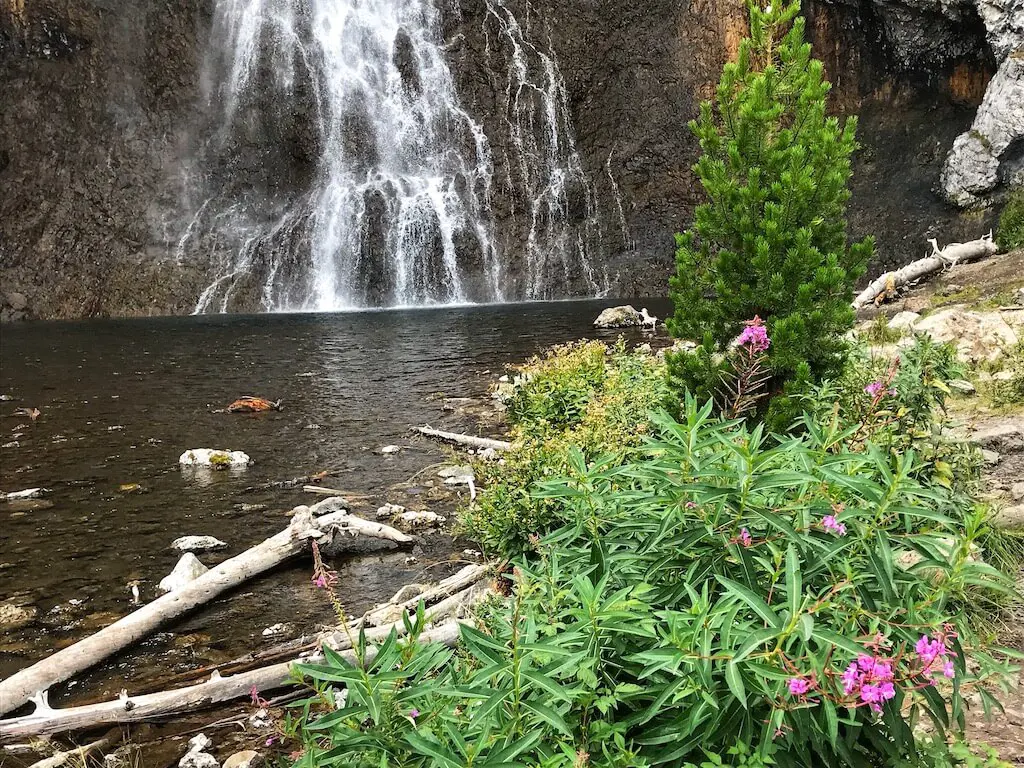
When it comes to wildlife viewing and photography in Yellowstone National Park, there are several items and accessories that can greatly enhance your experience. Whether you're a seasoned photographer or just a nature enthusiast, it's important to come prepared with the right equipment to capture those breathtaking moments. Here are some specific items that will be useful for wildlife viewing or photography in Yellowstone during this time of year.
- Telephoto Lens: A telephoto lens is an essential tool for getting close-up shots of wildlife from a safe distance. In Yellowstone, you'll encounter a variety of animals such as bears, wolves, elk, and bison, and a telephoto lens will allow you to capture them in all their glory without disturbing their natural behavior. Look for a lens with a focal length of at least 300mm to get the best results.
- Tripod: A sturdy tripod is a must-have for wildlife photography. It provides stability and prevents camera shake, especially when using longer focal lengths or slower shutter speeds. Yellowstone's unpredictable weather conditions, including high winds, make a tripod even more essential to keep your camera steady and achieve sharp images.
- Bean Bag or Window Mount: If you're planning to photograph wildlife from your car, a bean bag or window mount can be extremely helpful. They provide a stable base for your camera, allowing you to track the motion of animals without blurring the image. This is particularly useful when photographing animals from roadside pullouts or viewing areas.
- Polarizing Filter: A polarizing filter can help reduce glare and enhance color saturation, making your wildlife photos look more vibrant and professional. It can also be used to cut through reflections on water, revealing the underwater world beneath the surface. This filter is especially useful when photographing Yellowstone's crystal-clear rivers and lakes.
- Neutral Density Filter: A neutral density (ND) filter is useful for controlling the amount of light entering your camera, allowing you to achieve longer exposure times. This can create artistic effects, such as silky smooth waterfalls or motion blur in moving wildlife. Yellowstone's numerous water features, such as geysers and cascades, make an ND filter a valuable addition to your kit.
- Extra Batteries and Memory Cards: Wildlife photography can be a power and memory-consuming endeavor. It's always a good idea to carry extra batteries and memory cards, especially when spending long hours in the field. Remember to download your images regularly and backup your files to ensure you never miss a shot due to equipment limitations.
- Field Guide or Smartphone App: To make the most of your wildlife viewing experience, bring along a field guide or smartphone app that can help you identify the species you encounter. Yellowstone is home to more than 60 mammal species and over 300 bird species, so having a reliable guide can be invaluable for learning about the animals you see and documenting their behavior.
Remember, wildlife photography is not just about the equipment you have but also about patience, knowledge, and respect for the animals and their environment. Always maintain a safe distance, follow park regulations, and prioritize the well-being of the wildlife above getting the perfect shot. With the right equipment and approach, you'll be able to capture stunning images and create lasting memories of your Yellowstone adventure.
Essential Items to Pack for a Week in Greece in March
You may want to see also

Are there any restrictions or regulations on what can be packed or brought into Yellowstone National Park in early September?

Yellowstone National Park, located primarily in the U.S. states of Wyoming and Montana, is a marvel of natural beauty and biodiversity. If you're planning a trip to Yellowstone in early September, it's important to be aware of any restrictions or regulations on what you can pack or bring with you into the park.
One of the main regulations in Yellowstone National Park is regarding food storage. In order to protect the park's wildlife, including bears and other animals, the park requires visitors to properly store their food to avoid attracting wildlife. This means that you cannot leave food unattended in your campsite or vehicle. Instead, it must be stored in designated food storage lockers or containers. This regulation is in place to prevent bears from becoming accustomed to human food and to ensure the safety of both visitors and wildlife.
In addition to food storage regulations, there are also restrictions on the types of fires that are allowed in Yellowstone National Park. Campfires are only allowed in designated fire rings or fire grates, and visitors are required to gather dead and downed wood for their fires. Bringing your own firewood from outside the park is prohibited, as it can introduce non-native insects and diseases to the park's ecosystems. It's important to follow these regulations to prevent accidental wildfires and to protect the park's natural resources.
When it comes to general packing guidelines, it's always a good idea to come prepared for changing weather conditions in Yellowstone. Even in early September, temperatures can vary significantly, with cold mornings and evenings and potentially warm afternoons. It's advisable to bring layers of clothing that can be easily added or removed as needed. Additionally, be sure to pack appropriate footwear for outdoor activities such as hiking and comfortable clothing for exploring the park's trails and attractions.
Another important consideration when planning a trip to Yellowstone in early September is to be aware of any temporary closures or restrictions that may be in place due to the conditions in the park. For example, some hiking trails may be closed or have limited access due to safety concerns or wildlife management. It's always a good idea to check the park's official website or contact park officials before your trip to stay informed about any current restrictions or closures.
In summary, while there are some restrictions and regulations on what can be packed or brought into Yellowstone National Park in early September, they are in place to protect the park's wildlife, ecosystems, and visitors. Be sure to follow food storage guidelines, use designated fire pits for campfires, pack appropriate clothing for changing weather conditions, and stay informed about any temporary closures or restrictions. By adhering to these guidelines, you can enjoy a safe and responsible visit to Yellowstone National Park.
Essential Items to Pack for a Successful Hip Replacement Surgery
You may want to see also
Frequently asked questions
In early September, the weather in Yellowstone can vary greatly, so it's important to pack layers. Bring a mix of short-sleeved shirts, light sweaters or jackets, and a waterproof outer layer. It's also advisable to pack long pants and comfortable shoes for hiking and exploring.
Yes, it is recommended to pack warm clothing for Yellowstone in early September. While the temperatures may be comfortable during the day, the nights can get quite chilly. Be sure to pack a warm jacket or fleece, as well as hats and gloves for colder evenings.
Absolutely! Even though September is nearing the end of summer, the sun can still be quite intense at higher elevations. It's important to protect your skin from harmful UV rays, so be sure to pack sunscreen with a high SPF and apply it regularly throughout your visit.
Sturdy and comfortable footwear is essential for exploring Yellowstone in early September. It's best to pack a pair of hiking boots or sturdy sneakers that provide good traction and support. Make sure your shoes are broken in before your trip to avoid any discomfort or blisters.
Yes, there are a few items you should include in your packing list for wildlife viewing in early September. Binoculars are a must-have for observing animals from a safe distance. A camera with a telephoto lens can also be handy for capturing close-up shots. Additionally, don't forget to bring a good field guide or animal identification book to help you identify the different wildlife species you encounter.






